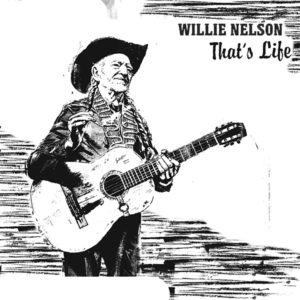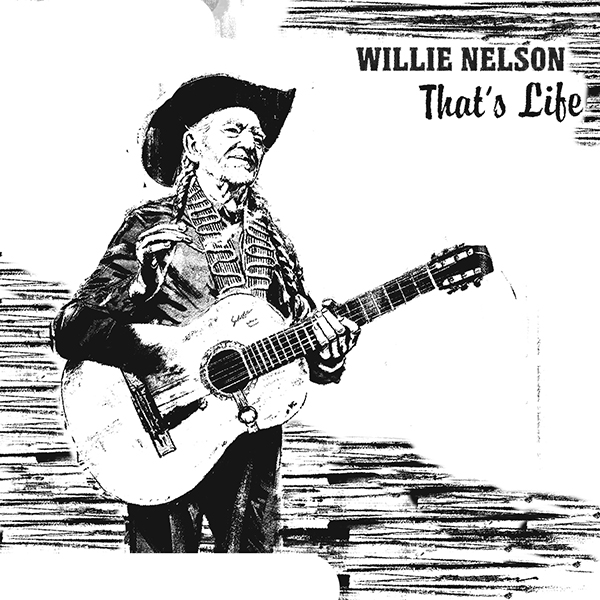By JORDAN GREEN, Editor-in-Chief

Willie Nelson is on the road again – with a new album, at least.
The country singer and picker released his latest album, “That’s Life,” on Feb. 26. It’s a tribute to Frank Sinatra, one of the best-selling artists of all time with hits like “Luck be a Lady” and, of course, “That’s Life.” The album is available online, in stores and on music streaming services.
Nelson has said before that Sinatra was one of his greatest musical inspirations. That’s one of the reasons he covered some of Sinatra’s most iconic pieces in this 11-song compilation, his second album to salute the stoic singer.
In 2018, Nelson told Rolling Stone magazine: ““I learned a lot about phrasing listening to Frank. He didn’t worry about behind the beat or in front of the beat, or whatever – he could sing it either way, and that’s the feel you have to have.”
This album proves the point. Those who know Nelson’s music knows that his rhythms are fluid, flowing and always fantastic. Not all quarter notes last quite as long as they’re technically supposed to. And sometimes, what would normally be a fleeting leading note turns into a ballad-like moment.
In the album, Nelson keeps most of the orchestral elements Sinatra was known for. What’s unique is the pairing of Nelson’s raspy, nasally voice with a refined musical ensemble.
Not to say Nelson isn’t a refined musician. But you won’t ever find him wearing a suit and tie while picking Trigger.
To some, putting his voice with a big band would be like mixing oil and water. This is not the case. Even though his voice stands out from the jazz piano, trumpets and drum sets, they complement each other.
Just like the combination of Nelson and Diana Krall, who joined Nelson for a cutesy performance of “I Won’t Dance.” The song is sweet, smooth and sexy, just like you’d expect a Sinatra tune to be. It’s vibrant, and it has some stand-out jazz singing.
The music video is the best part of the tune. Available for viewing on YouTube, it’s an animated clip showing the likenesses of Nelson and Krall in a 1950s-style cartoon. They jump around, drive fancy-looking cars and soar through the skies like characters from an MGM or Hanna-Barbera production. The producers of the video said they based it off of slapstick comedy routines of the time.
In that endeavor, they succeeded. It’ll bring a smile to your face whether you’re watching it alone or with that special someone.
Perhaps the most captivating video on the album is the lyric video for “That’s Life.” As the words come across the screen, the viewer watches an artist paint a portrait of Nelson holding Trigger while standing by a street light at night. That picture became the album cover.
If you don’t look at the album cover before you watch the lyric video, you might be confused about what you’re seeing. But at the very end, when the artist puts the finishing touches on Nelson’s cowboy hat, one is able to see the bigger picture – a beautiful piece of art.
That effect is a representation of the album as a whole. Sinatra’s songs are stellar as stand-alone pieces, but when put together on the album, they seem a little out-of-order in an emotional sense. “That’s Life,” which is perhaps Sinatra’s most inspirational tune, is tucked between “I Won’t Dance” and “Luck Be a Lady,” two of his most lustful. Doesn’t seem fitting.
Nelson closes the album with a jazzy, peppy performance of “Lonesome Road,” which has an oddly prophetic, cautionary message about the end of one’s life.
Lately, Nelson has been open about his health and his age. In recent interviews, he’s reflected poignantly and sincerely on what he’s done in his life. One can get the sense that the cowboy thinks he’s getting ready to ride away.
When you listen to “Lonesome Road,” however, you won’t feel sad. Nelson keeps it lively, just as he’ll be until the day he lays Trigger down for the last time.
Hopefully that’s a long time away. But it might not be. That’s life. Luckily, we’ve still got Nelson – a musical treasure – in ours.

